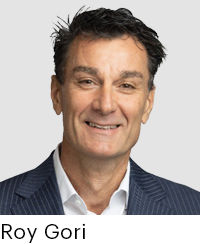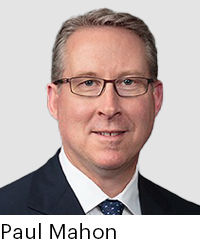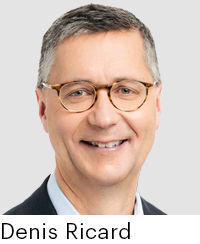In a series of presentations made at the 24th Annual Scotiabank Financials Summit, insurance company executives from across the industry discussed current economic conditions affecting their companies and their outlooks, mergers and acquisition (M&A) activity and the surplus capital positions many are currently maintaining.
Their presentations further revealed that Asia remains a very important area of business for Manulife Financial Corporation, Great-West Lifeco Inc. thinks advisor succession will be a big issue in the years to come (and it has a plan for capturing the businesses of those without successors) and Sun Life Financial Inc. continues to eke out a reputation for itself among investors as a wealth manager – not just an insurance company. The presentations also included a discussion with CEOs from iA Financial Corporation Inc., Intact Financial Corporation and Definity Financial Corporation.
Manulife sees growth ops in Asia

The current, marked slowdown in Chinese economic growth notwithstanding, Manulife’s president and CEO, Roy Gori is bullish on the region in general. “It is interesting how quickly the macro narrative on China has changed,” he agrees, but adds that the big picture in Asia overall “will continue to be a tremendous opportunity for our industry.” He also points out that mainland China, in particular, represents less than one per cent of the company’s core earnings.
Where the company does operate is in Hong Kong, to serve the mainland Chinese visitor market, dubbed the MCV market. Gori says the market is made up of 500-million people – visitors from China who come to Hong Kong for the product and investing options and for the health network which exists there. “This population of customers is something that we’ve been focused on for many, many years,” he says. “This is not a new area of focus for us.”
To succeed in Asia, he continues, companies need the trust of key stakeholders, including local regulators, governments, customers and employees. “I am as excited about Asia as I was five years ago. I still think that this is going to be a driving force for our business and, quite frankly, for the global insurance market.”
With China recently lifting foreign ownership limits on financial firms, it was noted that a wave of asset managers had increased their respective stakes in the region, but reports suggest that many of these are now struggling.
“They’re new to the market. They don’t have the history. In other cases, they’re not really complete with their capabilities from a distribution perspective and from a product perspective,” he told those gathered for the presentation.
Outside of China, he adds that it is necessary to have a foot in a number of different geographies for the diversification and growth that strategy provides. “The U.S. market is the largest market in the world. We are quite uniquely positioned in that market – we are the leader in behavioural insurance,” he says, referencing the Vitality products available in Canada and the U.S., along with the equivalent Manulife Move product being offered in Asia. “We are the leaders in that field of insurance and we were the first to offer it in the U.S. It’s allowed us to outgrow the market by 28 per cent over the last four or five years,” he says. “We feel that this market represents a strong growth opportunity for us.”
With more than $20-billion in reserve above supervisory minimums, and more than $10-billion over the company’s stated operating range, he adds that the company is in a strong position to buy back stock. “Dividends and organic deployment of capital will continue to be our priority,” he says. “We’re not desperate to do M&A.” While opportunistically he says the company will consider such activities, he says the company is unique in that it doesn’t require such deals to meet targets.
Great-West Lifeco dedicated to distribution

This company’s Canadian wealth strategy was highlighted in conversation with president and CEO, Paul Mahon discussing the recently completed acquisition of Value Partners Inc. and the deal-in-progress to acquire Investment Planning Council Inc. (IPC). Both firms were and are being acquired by the Canada Life Assurance Company, a subsidiary of Great-West Lifeco.
“It takes us into that top tier of non-bank providers in that space,” he says. “That can give you a competitive edge from the cost perspective. The second part of that, though, was capability.” (With the completed transactions, the company gives advisors the opportunity to move between mutual fund and investment dealer platforms more easily – IPC is an investment dealer firm, while Value Partners gave the firm private investment council capability.)
“We want to have that full suite of wealth services. That fills out the platform and allows us to position ourselves to be the leading provider to allow advisors to build both their business, but also think about succeeding their business. Because advisor succession will be a big issue in the years to come,” he says.
He adds that the firm is now investing heavily to make it more seamless for advisors who want to transition their business through the different regulatory regimes formerly overseen by the Mutual Fund Dealers Association of Canada (MFDA) and the Investment Industry Regulatory Organization of Canada (IIROC), which have both merged to become the Canadian Investment Regulatory Organization (CIRO). “Ideally we’d like to be early to market and closing that gap because we think it’s going to be the future.”
Discussing the matter of succession, he says there are usually three scenarios for advisors: One is where the advisor knows who they want to transition their book to. “We believe that is often the highest value action an advisor can take, and we want to be there for them, whether it’s financing, whether its data, whether it’s training.”
In the second scenario, he says advisors have built their books of business to the point where it overwhelms their ability to service all clients involved. “Often they’ll want to maybe take part of their client base and find it a different home where it can receive full and proper service,” he says. “We’re quite happy to acquire those.”
Finally, those without a natural successor can also divest their businesses to one of the companies under Great-West and stay in the business on a salaried basis. “We think they’re all value creating,” Mahon says of the different strategies. “Our key is to make sure that we stay close to the client and the advisor through that process.”
Sun Life the asset manager

Kevin Strain, president and CEO of Sun Life, meanwhile says although the majority of Sun Life’s business comes from asset management – 40 per cent of the company’s income come from wealth management, 30 per cent comes from group insurance sales and 30 per cent from individual life sales – he says it’s still not well understood by investors and stakeholders that the firm is much more diversified than most give it credit for.
“We wanted to make sure that our investor base understood that we’re an asset management and an insurance business,” he says. “That’s evident in our $1.4-trillion in assets under management, but people weren’t thinking of us as an asset management company.”
While other asset managers meanwhile build out their insurance operations, he adds: “I would argue we have the best insurance business of any of those companies. We wanted to highlight that for investors that we’re not Sun Life insurance company, we want to be the best asset management and insurance company in the world.”
He adds that the company has a strong capital position but it is disciplined about how it deploys capital.
iA CEO more positive on IFRS developments

International Financial Reporting Standards (IFRS) which were required to be implemented this year, have cost insurance companies a great deal of money and resources to fall into line. One outspoken critic of the development (who has changed his stance in recent months) has been Denis Ricard, president and CEO of iA Financial.
“I used to be critical about these changes in the past, but I must admit that I feel much more positive about IFRS 17,” he says. “I believe the transition has been pretty good. It did recognize for our organization the good position in terms of capital, which was not recognized in the past. I was very pleased.” (The company today has more than $1.8-billion in excess capital.)
“We’re going to stay very disciplined in the way that we’re going to invest capital. It’s not because we have a huge amount of excess capital that we will do stupid things.” He adds that the company is interested in deals within iA’s own areas of expertise. “I’m not looking at entering a new business that we don’t really know about. I want to strengthen the current business,” Ricard says.
“If we decide to do that it will be more on the life side at this point that people should expect some activities, U.S. life, yes. Because in Canada, for the Canadian life insurance business we were very strong already. But there’s no opportunities, really.” (He adds that in the United States, the company’s focus is on bumping up sales and winning new accounts. “We’re targeting 10 per cent increase in the U.S. over the next five years, per year, because we believe we can gain some market share,” he told those gathered.)
The CEO also highlighted the company’s strength in distribution. “By being close to distributors, we knew the business. Our strategy has been to provide them with the best digital tools in the market,” he adds. “The best digital tools and the breadth of product, that is what made us successful so far and this is where we are investing heavily going forward.”
Definity aims for a spot among top players

While Intact Financials’ presentation focused exclusively on the firm’s announcement to acquire Direct Line Insurance in the United Kingdom – the transaction grows that company’s market share to approximately seven per cent of the commercial market in that region – Definity Financials’ presentation with president and CEO, Rowan Saunders covered more ground.
“We want to make progress on being a top five insurance company in Canada,” Saunders told those gathered for the presentation. “We certainly want to continue big investments in digital and remain a digital leader in the Canadian business.”
The company is also focused on distribution, having built out a distribution arm in the past 12 months which is currently approaching $1-billion worth of business. “We know that we can grow at about twice the rate of the industry organically,” he says. “But now it’s about more inorganic growth that we’d like on some of the product lines.” Later on he says there’s a defensive element to distribution: “There’s certainly a very strategic component to it. What we get is two sources of income. You get distribution income and you get underwriting income.”
Auto insurance, he says is interesting, as it has moved through a number of cycles in a short period of time with both COVID 19 and hyper-inflationary pricing affecting the business. “Now that business is kind of normalizing,” he says. “Pricing is coming through the marketplace in a pretty strong way. I feel that there is pretty consistent market discipline.”
The same story, he says, would appear to be playing out in commercial lines, as well. “I think players are more disciplined than they used to be.”
As for M&A, he says the company is built to be a much bigger business than it is today. “We’ve hired top talent,” he says. “The executive team itself has significant experience in M&A in our previous roles and lives. We have senior and middle management teams that have been brought in for this capability. We’ve built the infrastructure for this,” he adds. “We absolutely feel that even though Definity itself hasn’t done a lot of M&A, the experience in the organization is there.”
He adds that the company’s thesis calls for more consolidation in the industry. “We think that is going to continue. There’s a few reasons for that: Scale is increasingly important. Technology’s hugely important and what we’re seeing, particularly on the personal side, is that brokers are saying we really don’t need to deal with multiple insurance markets, we need five or six. We certainly don’t need 10 or 15.”
Reinsurance is also expected to play a role in this consolidation, as well. (Reinsurers, having capital constraints of their own, are pricing accordingly during recent renewals. Capacity is also reportedly an issue.)
“Smaller companies proportionately rely on reinsurance more than larger companies. I think that’s really putting some strain on smaller organizations, particularly in some of the international commercial players. They typically play in the upper middle market and specialty parts of the Canadian marketplace,” he says, further describing their challenges, which include increased competition in specialty business lines from larger players like Definity, where there wasn’t a lot of domestic competition previously. “With more difficult times does come more opportunities for people thinking about strategic exits.”




